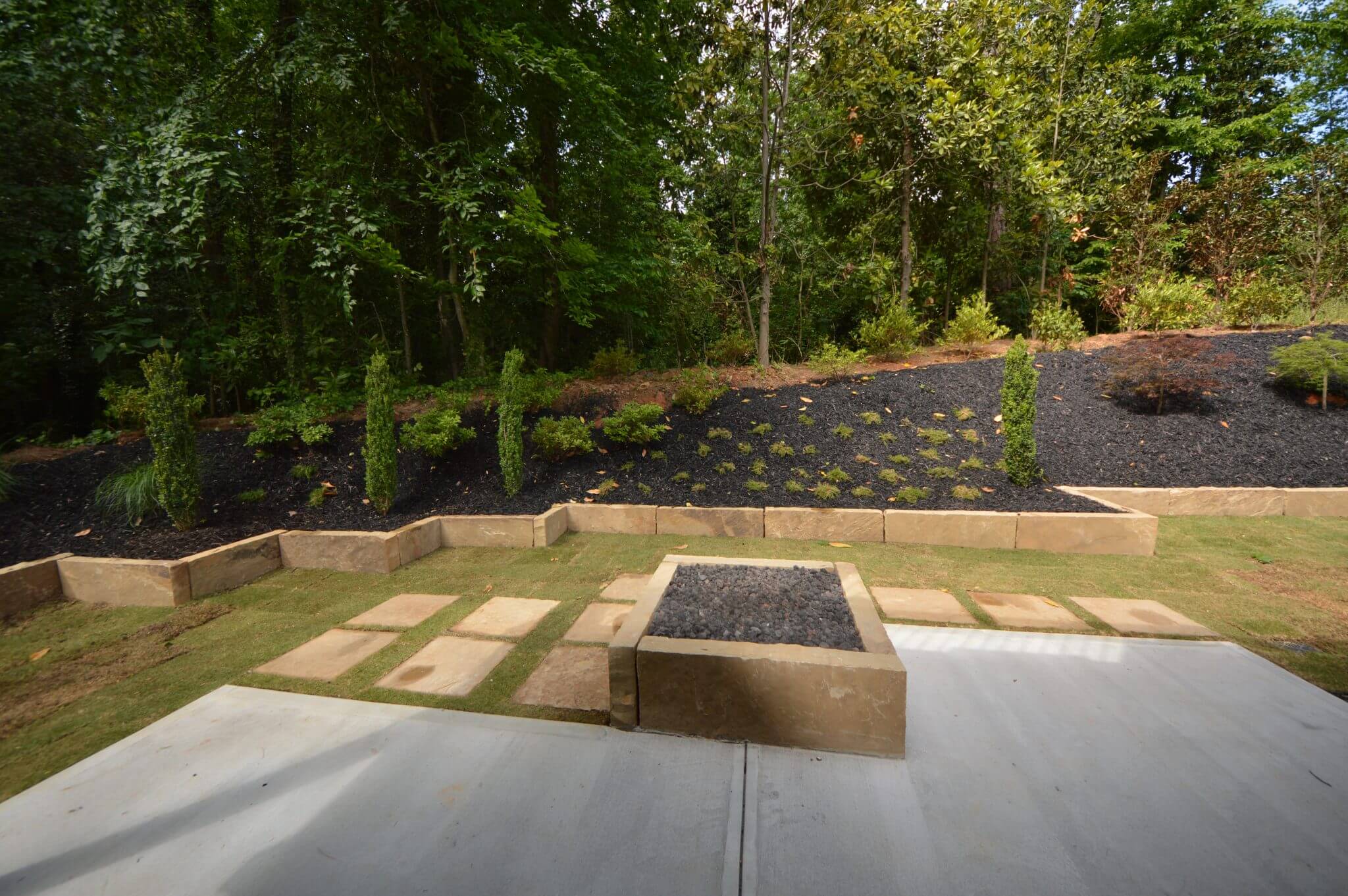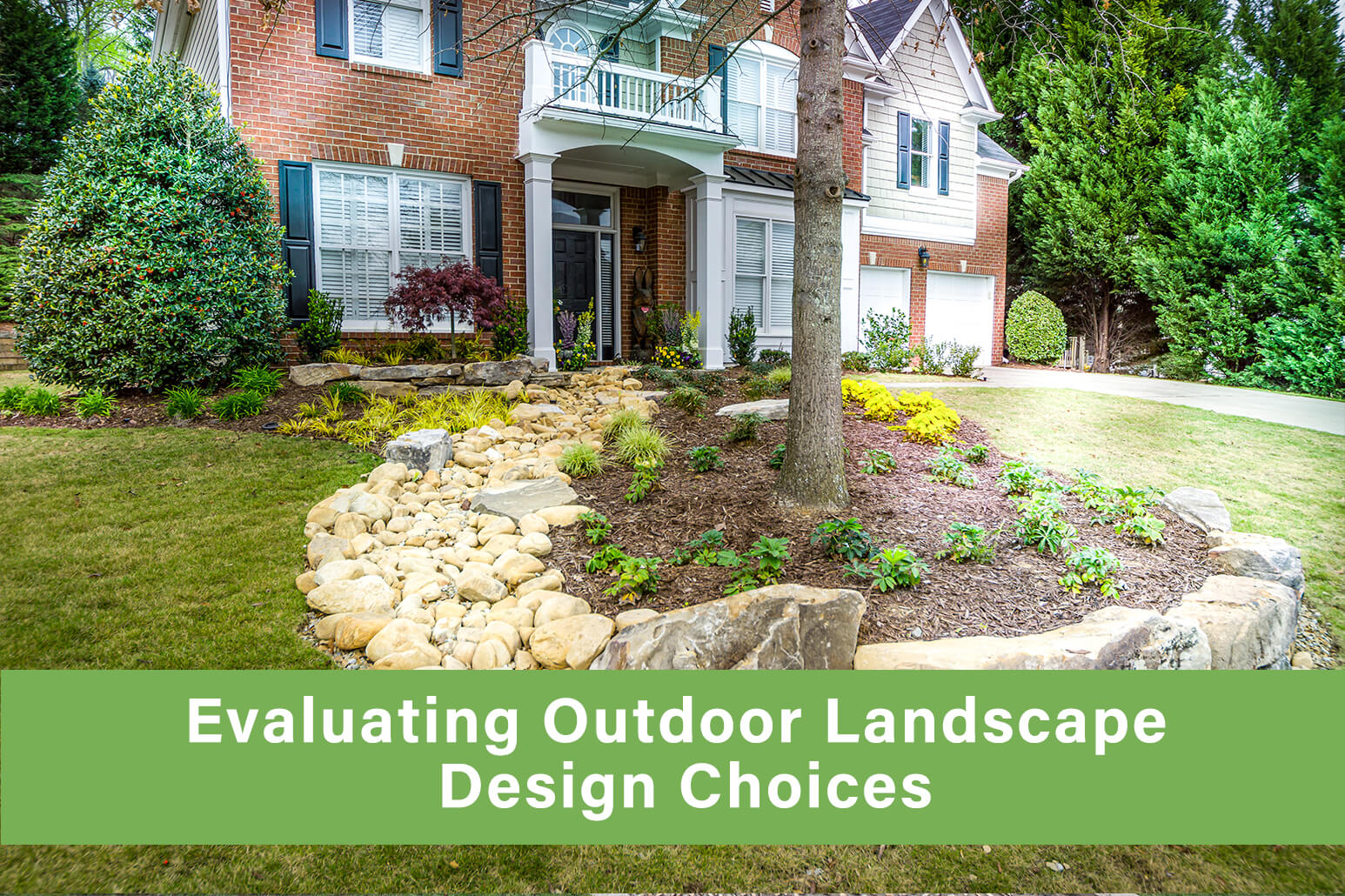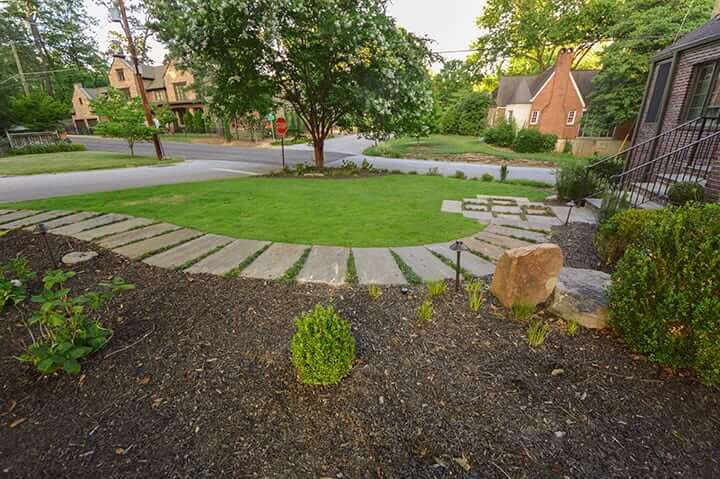If you are considering a new look for your landscape, but don’t want to randomly start adding plant life, water features and other landscape items, then now is the time to consider a landscape design that is not just beautiful, but eco-friendly, too. Contrary to what one might think, just because you have a garden or landscaped lawn, it doesn’t automatically mean that it is eco-friendly. For a landscape design to be truly eco-friendly it needs to be designed to minimize negative impacts on the world in which one lives.
In Georgia, especially metropolitan areas like Atlanta where the plethora of vehicles already impact the air we breathe, having an eco-friendly landscape can go a long way towards making your neighborhood a better and healthier space. But, what needs to be done in order to have a landscape that is environmentally friendly? Here are a few things to consider as you begin planning a landscape design:
- Minimal grass to be cut. While not every landscape design lends itself to this, if you can design a lawn where there is less mowing to be done you can possibly avoid needing a large lawn mower. This will prevent sending an assortment of chemicals into our air. Plus, less mowing means more time for enjoying the yard!
- Water conservation is also a great way to help the environment. We all know that Georgia is prone to droughts, so why not help your lawn thrive even in years with less rain. Some options include xeriscaping some portions of your yard (consider those areas where the sun is especially strong) or having a drip irrigation system that allows you to control exactly where the water is sent, rather than watering a huge expanse of lawn. If you don’t have a drip system, but do use sprinklers, consider a system with a timer or moisture/rain sensor that prevents the sprinkler from turning on unnecessarily.
- Choose fertilizers that reduce (or don’t even include) chemical herbicides. Like gas emissions, fertilizers put off pollutants. Instead opt for natural soil enrichers, the use of composts and mulch or even an approach known as companion planting which is the process of planting two or more plants near each other in order to boost growth or even repel pests.
- Opt for perennial flowers rather than annuals. This way you aren’t buying those plastic containers – which then must be tossed out/recycled – of plants every year. Even better, many perennials will multiply on their own so you buy them once but have them for years.
- For a two-fold benefit that helps you and the environment, consider adding an area to your yard that doesn’t need gardening related maintenance. This might be a structure like a gazebo, deck, outdoor kitchen or other useable space, the introduction of a pond, or perhaps a stone or brick seating area.
- Incorporate natural items – stones, water features, etc. – whenever possible. They will look great and be eco-friendly, too.
- As much as possible, choose solar lighting rather than costly electric ones.
If you feel overwhelmed by the parts and pieces in involved in designing an eco-friendly landscape, don’t stress. The design team at Outdoor Makeover and Construction, can take your existing landscape and turn it into a beautiful, environmentally friendly work of art, or help you start from the ground up to design an eco-friendly landscape from the roots up. Give us a call today to learn how we can take your home’s outdoor space and turn it into the most inviting space ever.


 8 Outdoor Makeover Ideas for Your Landscape
8 Outdoor Makeover Ideas for Your Landscape Evaluating Outdoor Landscape Design Choices
Evaluating Outdoor Landscape Design Choices Landscaping Upgrades that Will Add Resale Value
Landscaping Upgrades that Will Add Resale Value
LET'S BE SOCIAL: